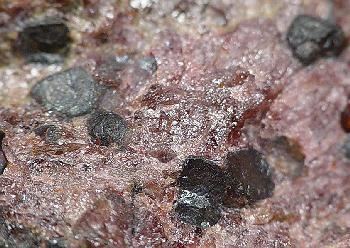Category Silicate minerals Strunz classification 9.AF.55 Crystal system Monoclinic | Formula(repeating unit) Mn9(SiO4)4(OH,F)2 Dana classification 52.3.2d.3 | |
 | ||
Crystal class Prismatic (2/m)(same H-M symbol) | ||
Sonolite is a mineral with formula Mn9(SiO4)4(OH,F)2. The mineral was discovered in 1960 in the Sono mine in Kyoto Prefecture, Japan. In 1963, it was identified as a new mineral and named after the Sono mine.
Contents
Description
Sonolite is transparent to translucent and is red-orange, pinkish brown to dark brown in color and colorless in thin sections. The mineral has a granular habit or occurs as prismatic to anhedral crystals up to 2.5 cm (0.98 in). Sonolite is the manganese analogue of clinohumite, a dimorph of jerrygibbsite, and a member of the humite group.
The mineral occurs in metamorphosed manganese-rich deposits. Sonolite has been found in association with calcite, chlorite, franklinite, galaxite, manganosite, pyrochroite, rhodochrosite, tephroite, willemite, and zincite.
History
In 1960, Mayumi Yoshinaga was investigating alleghanyite and other manganese orthosilicates in Japan. He discovered a dull, red-brown mineral on the first level ore body of the Sono Mine, and later from a number of other sites. Using samples from ten locations in Japan and one in Taiwan, the mineral was described in 1963 and identified as a new mineral species. It was named sonolite after the mine in which it was first found and the name was approved by the International Mineralogical Association.
Distribution
As of 2012, sonolite has been found in Austria, France, Japan, Kyrgyzstan, Romania, Russia, Sweden, Switzerland, Taiwan, and the United States. The type material is held at Harvard University in Cambridge, Massachusetts, US.
